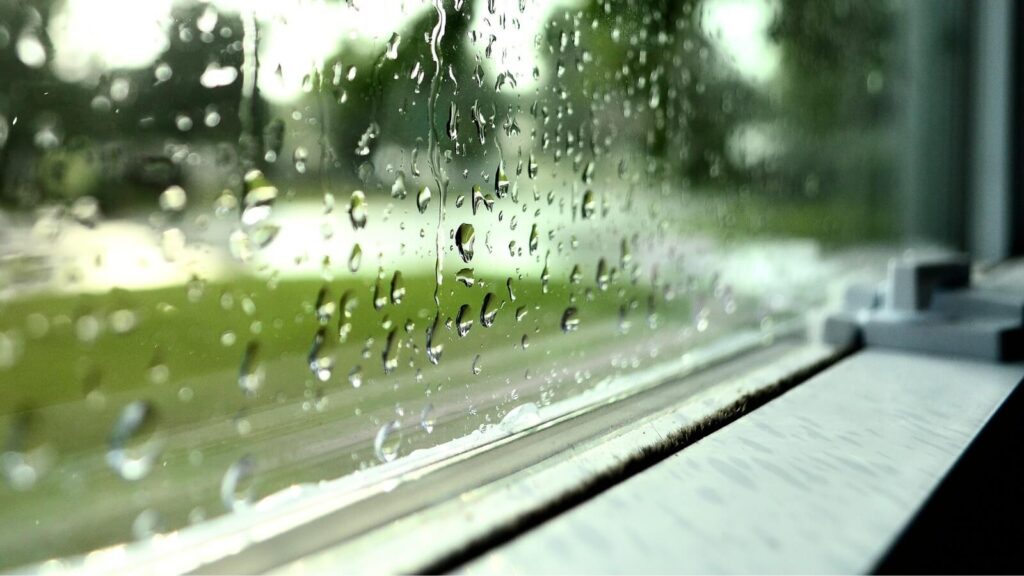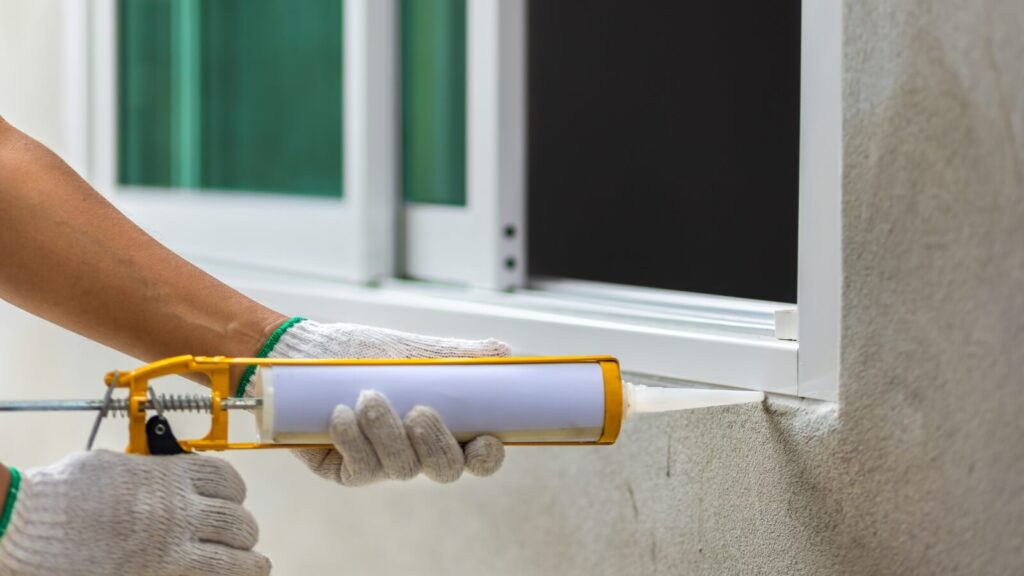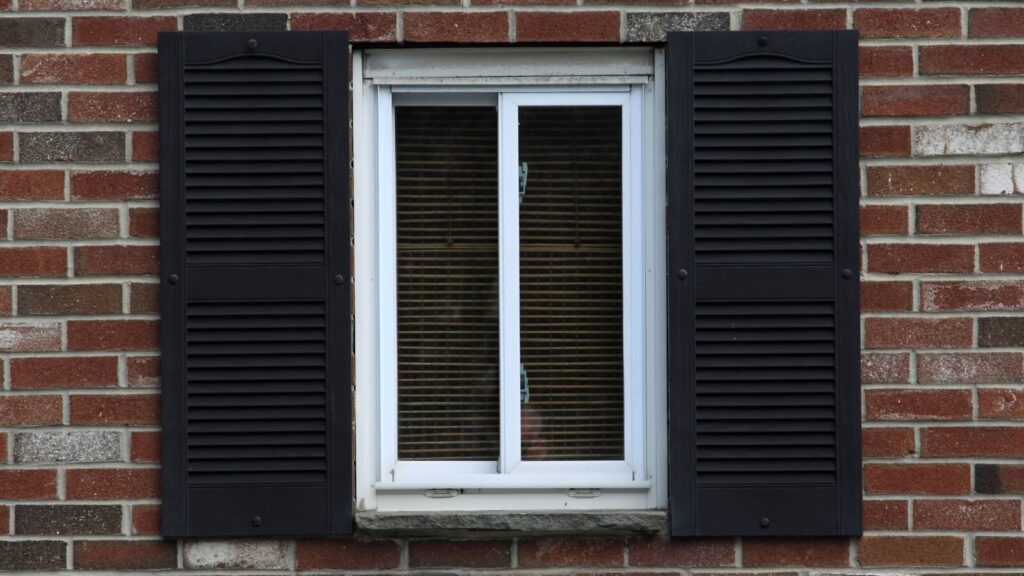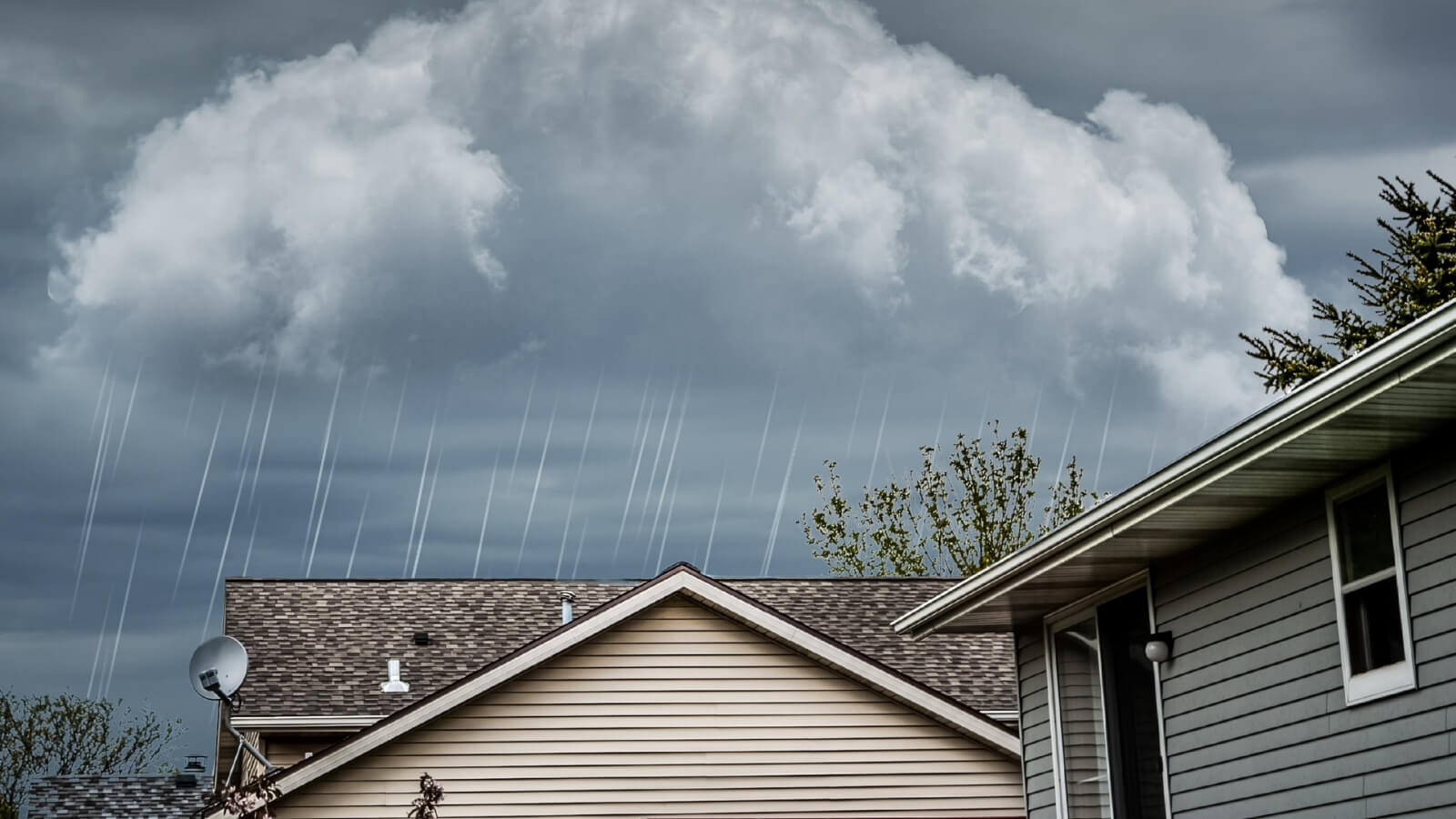April showers bring May flowers, right? Well, in the state of Wisconsin, that phrase rings especially true, as it rains nearly 47% of the time in the spring, accumulating around 8 total inches of precipitation. And while some people may be happy to see this change in weather (It’s better than piles of snow!), the rainy season can still wreak havoc on your home if your windows aren’t properly equipped to handle it.
Rain getting past your windows is more serious than just dealing with a little water that needs drying—it can lead to issues relating to mold and mildew, rotting wood, serious structural damage, and more. Avoid costly repairs this spring by preparing your windows to withstand Wisconsin’s rainy season.
How to Weatherproof Your Wisconsin Windows For the Rainy Season
Check for Leaks

The very first thing you should do to prepare for the rainy season is to go around and check for leaks. On a dry day (preferably one with a lot of sunlight so you can see small details better), go around your house and examine the inside of each window.
Check around the frames for warped wood, bubbling paint, or a musty odor—they may be signs that rainwater can (and has previously) entered your home. Make a note of any questionable-looking frames, as you’ll want to come back to them during the caulk and weather stripping phase.
Once you’ve looked over the inside of your home, it’s time to look at your windows from the outside. This may not be possible depending on the size of your windows or home, but try to look them over as best you can from the safety of your yard. Use a garden hose to spray water at your window while someone inside watches for leaks or signs of moisture.
It’s important to remember that even if everything looks okay visually, it is still possible for rain to get past. Don’t give up after this step! Although you may save yourself time, you definitely won’t be saving yourself money if damages occur.
Clean Out Your Gutters
Although the gutters and the health of your windows may not seem connected, they’re actually intertwined. As you already know, if your gutters are blocked by leaves, twigs, and other debris, it can prevent them from draining properly. However, what you may not know is that gutter water overflow can trickle down and pool around your windows.
That pooled water, outside of damaging your window frame and the surrounding structuring, can eventually leak inside. Your windows are already dealing with enough rain coming out of the sky—don’t add to it by neglecting your gutters. Dig out the ladder and (on a non-rainy day) double-check to make sure your gutters will be able to direct water away from your windows.
Reapply Caulk & Weather Stripping

There’s a high likelihood that the caulk around your windows has cracked or deteriorated over time. If that’s the case, then it’s time to apply a new layer! We recommend using silicone caulk—it’s a great option for exterior windows because it’s waterproof and maintains its flexibility despite temperature fluctuations, UV exposure, and moisture.
Caulking your windows is something you can do yourself! All you’ll need is a caulking gun, the caulk itself, and a rag or caulking tool. If you want your lines to be extra clean and straight, you may want to put painters’ tape along the edges of the window frames before caulking.
Then, you just need to:
- Prepare the area. Ensure the window is clean and free of debris! If needed, wipe the surface with a damp cloth and let it dry completely.
- Load the caulk gun. Insert the caulking tube into the caulking gun. You then want to use a utility knife or scissors to cut the tip of the gun at a 45-degree angle.
- Apply the caulk. Holding the caulk gun at a 45-degree angle at the crack between the frame and the siding, you’ll want to slowly squeeze a stream of caulk along the gap.
- Smooth it out. When you’re done, you’ll want to use the rag, caulking tool, or even your finger to smooth it out, making sure the lines are neat and complete.
It’s important to remember not to caulk the “weep holes” on the sides of the windows. Those are holes that are meant to “weep” out any water that finds its way past the frame.
Weather stripping is more frequently used on the interior windows and can be used in tandem with caulk if you’d like extra protection. There are many different types of weatherstripping—foam, felt, rolled vinyl-gasket—and all make great options. The process is a lot like applying caulk: Clean around the windows, cut the weatherstripping to size, and apply it in clean lines along the gap between the frame.
Consider Storm Shutters

If you’re really worried about your windows this rainy season, then you may want to consider getting storm shutters (also known as hurricane shutters). Spring doesn’t just bring an onslaught of water: it can also cause high winds and hail, leading to flying debris that can break or shatter your windows completely.
Storm shutters are protective barriers that go over your windows and safeguard them against damage. There are many different types of storm shutters, including:
- Storm panels
- Accordion shutters
- Roll-down shutters
- Bahama shutters
- Colonial shutters
Some are permanent fixtures, like roll-down and accordion shutters, while others, like storm panels, can be put up and down as needed. What type of storm shutter you choose is very dependent on the weather in your area. Southern Wisconsin, along the Mississippi River, for example, is more prone to tornadoes, and homeowners may want to consider adding storm shutters year round.
Meanwhile, Western Wisconsin is less prone to severe weather, so homeowners may only want storm panels for the rarer instances of storms. Whatever you choose, it never hurts to be prepared! You can even opt to keep sheets of plywood on hand that can be put in front of your window in case of inclement weather.
It May Be Time to Upgrade Your Windows
You can weatherproof your windows as much as you want, but at the end of the day, they might just be too old and outdated to withstand intense weather. Just like everything else in your house, windows have a lifespan, and when they finally reach it, you don’t want to find yourself constantly fighting to keep out the rain.
Trust the team at Standard Windows & Doors to upgrade your windows today! Thanks to our years of experience and use of high-quality products, our windows aren’t just built to last—they can withstand anything the Wisconsin weather throws at them. If you’re interested in staying dry this spring, then contact us today for a free estimate.


